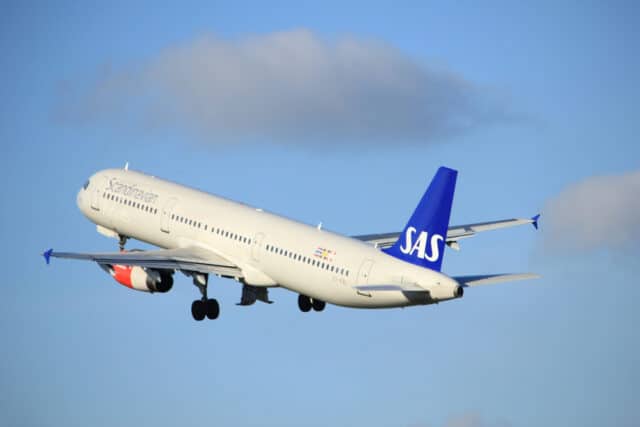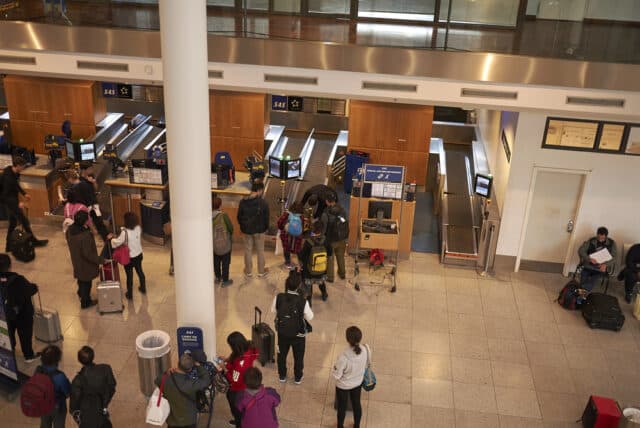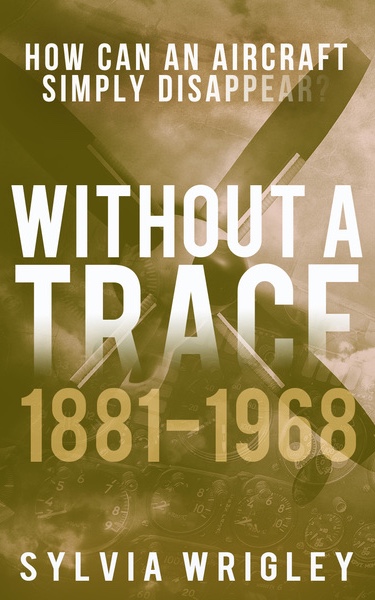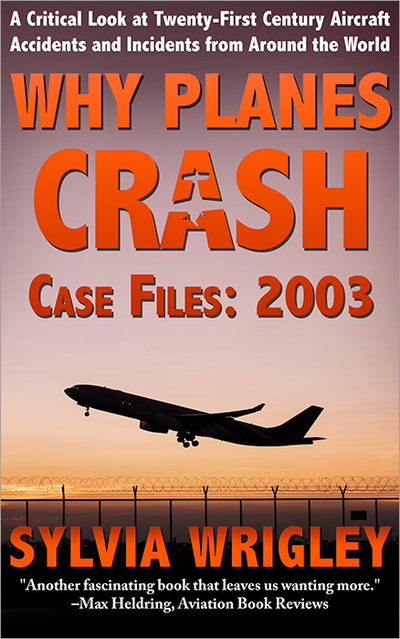The Stowaway in Plain Sight
On the 4th of November 2023, Scandinavian Airlines flight 931 arrived at Los Angeles International Airport at Gate 156.
A gentleman in his forties disembarked the aircraft and walked to the Customs and Border Protection checkpoint. There, he explained that he’d just arrived on SAS flight 931 but seemed to have left his passport on the aircraft.
The immigration official sent him to speak to customer service so that someone could page Scandinavian Airlines staff to look for the passport.
The gentleman explained to the customer services staff that he’d just arrived from Copenhagen but had left his documents on the plane. The staff member asked for specifics to help the airline staff find it. The gentleman told him that it was a US passport and that he’d been sitting in seat 48G.
The staff member tried to contact someone from Scandinavian Airlines and in the meantime, he told an immigration officer what had happened. This immigration officer said he was happy to process the gentleman while they waited for someone from the airline to pick up the passport.
But when the immigration officer tried to look him up, he found that the gentleman wasn’t listed as a passenger on SAS flight 931. Surprised, he broadened his search, but the officer couldn’t find any record of the gentleman arriving on any international flight that day. The Customs and Border Protection system normally holds the details of all passengers on flights into the US.
He asked the gentleman to write down his name, date of birth and flight information and then tried to search again. Nothing. As far as US immigration was concerned, the gentleman didn’t exist.
The immigration officer called for a supervisor for help. The officers then searched the gentleman’s bag and found two identification cards: one Russian and one Israeli. Neither of these documents are valid for travel into the United States. Both Russian and Israeli citizens must have a valid passport; in addition, Russian citizens need a VISA (Visitors International Stay Admission) and Israeli citizens require an ESTA (Electronic System for Travel Authorizations) under the visa waiver program.
The gentleman showed the officers a photograph showing part of a passport. That partial page showed the date of birth and passport number but not the photograph of the passport holder.
The officers searched using the passport number, but again, there was no record of that passport in the Customs and Border Protection system.
They found that there was no record of him in any system: not in Customs and Border Prection, not in the ESTA database where any Israeli applications would be recorded, and not in the US Department of State VISA Database.
The officer had never before encountered a situation where a passenger in his inspection area was not already in the system.
By this time, they had accounted for all passengers listed on the passenger manifest for SAS flight 931. In fact, every passenger who had arrived at LAX on a European flight before 15:00 that day had been through Customs and Border Control. There were no additional passengers left to process, but the gentleman had not yet been processed.
It dawned on the supervisor that she was dealing with a stowaway. The gentleman was escorted to the Admissibility Review Unit where he was held for further questioning.
Meanwhile, the Scandinavian Airlines crew had not found any missing passports on the aircraft. They came to the same conclusion: they were “plus one” as the station manager put it, for the passenger load for the flight. The gentleman wasn’t on the passenger manifest but the cabin crew recognised him as being on the flight. In fact, they’d noticed him because he had kept changing seats. None of the cabin crew had seen his boarding pass.
The cabin crew counted the passengers in each section, to ensure that the aircraft was balanced for take-off and landing. However, no one had totalled the section counts, which would have made it immediately obvious that they had an extra passenger on board. In what seemed more like luck than good management, the stowaway had remained undetected.
Back at the Admissibility Review Unit, a Russian-speaking Customs and Border Patrol officer came to act as a translator for the interview and the gentleman was read his rights in Russian and in English.
During questioning, the gentleman said that he had a PhD in economics and marketing and had worked in Russia as an economist. He said he hadn’t slept in three days and wasn’t sure if he’d had a ticket for the flight to the US. He couldn’t or wouldn’t explain when he’d arrived in Copenhagen or what he was doing there. When asked how he got through security without a ticket, he said he had no idea.
He gave the interviewers permission to scroll through the photographs on his phone. The most recent photograph was of a flight information screen with Danish text, presumably taken in Copenhagen. The next photographs showed screenshots of a map, but they weren’t able to identify the city. Another held the details of a hostel in Kiel, Germany. The gentleman then turned his phone off.
An FBI special agent filed a criminal complaint at the United States District Court. The United States Magistrate Judge found that there was probable cause to arrest the gentleman on a charge of Stowaway on an Aircraft in violation of 18 U.S.C. § 2199.
In the US, stowing away is a felony offense, where stowing away is defined as boarding or entering without the consent of the owner or person in command of any vessel or aircraft, with the intent to obtain transportation. The charge carries a prison sentence of up to five years or a fine or both.
But how did he get onto the aircraft in the first place?
At Copenhagen Airport, CCTV showed that he’d arrived at the metro terminal in the late afternoon on the 3rd of November, the day before he arrived in Los Angeles. He did not have a ticket for any flight that day. Apparently he walked closely behind another passenger with a valid boarding pass to get through the security turnstile. He was now in Concourse C which primarily handles international departures outside of Schengen. At passport control, he showed both his Israeli and Russian passports to the Danish border police.
His Russian passport did not have any stamps or visas showing his entry into Schengen, the area of European Union countries without internal borders, He did have a valid visa for entry on his Israeli passport, but he had overstayed, breaking the rules of his visa. That meant he was now in Denmark illegally.
Worse, the gentleman told the passport control officer that he was not actually leaving. He explained that he didn’t have a ticket but was just walking through the airport to find out if he could travel on his current documents.
The Danish Border police took both passports and told him to stay put. He was to remain in the departures terminal until they worked out what they were supposed to do about his overstay.
It is not clear how long they expected him to wait.
Hours passed. It was late evening when, according to the representative of the Danish Border police, he first attempted to leave. According to the police report, staff from Scandinavian Airlines said that he had attempted to board a flight to Bangkok using his Russian ID card, not valid for travel, and a piece of paper with Cyrillic writing on it. The gate staff checked the flight manifest and confirmed that there was no record of this passenger and turned him away.
In the early hours of the morning, he tried again, this time attempting to board a flight to London. Again, the gate staff checked his documents and refused to let him onto the plane.
It was about 8am when he joined the queue to board Scandinavian Airlines flight 931 to Los Angeles. This time, he managed to get past the gate staff and onto the aircraft without anyone stopping him. He looked around business class, where a cabin crew member offered to help him find his seat. He retreated to economy and then sat down in seat 36D shortly before departure. The crew finalised the flight information listing 183 passengers. However, there were actually 184 passengers on board.

During the ten-hour flight, he moved through a series of unassigned seats, managing to get two meals at each meal service. One crew member noticed him talking to other passengers on the flight, who seemed to ignore him. Another remembers asking him to return to his seat, at which point he moved to a new unassigned seat. Apparently, he caused an issue when tried to take some chocolate which belonged to the cabin crew.
No one noticed that he was not supposed to be on the flight at all.
When the flight arrived in Los Angeles, CCTV captured him chatting to another passenger as they walked through the arrival area. He asked the passenger for their phone number, which he received. They separated as they reached the checkpoint.
The gentleman spoke to the immigration official, which is when he said he’d left his US passport on the plane.
He remained in custody for almost four months until the trial started.
In court, the federal public defender challenged the Copenhagen Airport evidence, arguing that the police officer’s report relied on hearsay. They wanted the second hand information to be excluded from the case: the conversation between the gentleman and the border police as well as the claim that he attempted to board two other flights at Copenhagen. This was because many of the statements in the report written by the Copenhagen Airport Police Officer did not give any details as to who had given a statement. There were just vague references such as “staff at the gate informed police” that he had attempted to board, or that the gentleman had told “another officer” that he was walking by the airport and decided to see if he could travel. The defence asked that all of the police officer’s testimony quoting unnamed and unknown witnesses be excluded, especially as none of the CCTV footage from Copenhagen showed the gentleman attempting to board other flights.
Unfortunately, this did not help the gentleman very much, as he clearly had boarded the aircraft without a boarding pass and flown to Los Angeles. Eleven witnesses who had interacted with the gentleman were called, and the evidence included the gentleman’s green hat, which presumably made it easy to spot him on other CCTV recordings.
After a three-day trial, the jury found him guilty under the offence of 18 U.S.C. § 2199 STOWAWAY ON AN AIRCRAFT.
His defence asked that the sentence be limited to the four months of time served with no restrictions on his release, as he was likely to be deported as soon as he finished his jail time. They showed documents from his family members and friends that said he had recently endured personal difficulties, which led to lack of sleep and anxiety. He was described as kind, responsible and helpful. The gentleman had no prior convictions and no criminal history.
The defence further argued that the gentleman not be asked to to pay restitution to Scandinavian Airlines. Restitution is to compensate victims but, the defence pointed out that it was not a full flight, and there were many empty seats in economy. Thus, the defence argued, the airline did not suffer any financial loss (although I’m wondering about the chocolate taken from the cabin crew).
The gentleman was given a sentence of time served and all fines were waived. However, he was also told to pay $2,174.90 in restitution, which seems likely to be the Scandinavian Airlines ticket.
His family spoke to Russian media and said that he really did have an education as an economist but had never worked in that profession. He had suffered family losses and had been living off of his savings. Earlier that year, he’d moved back to Israel and became distant, not responding to messages. By September/October, he had fallen out of touch with all his relatives, other than mentioning that he was in Paris. No one knew what he was doing there or how he had ended up in Paris, let alone Copenhagen.

When this first happened, I looked for more information on stowaway statistics. Almost every reference was about wheel-well stowaways. However, I found a 2010 case of a stowaway posing on a passenger on a commercial flight. A young Asian man in Hong Kong boarded an Air Canada flight to Vancouver disguised as an elderly white man. Canadian media reported that he wore glasses, a brown cardigan sweater, a leather flat cap and a silicon mask known as The Elder which retails for over $500.
At the gate, he should have been asked to show his passport. However, instead he showed the gate staff a loyalty card for Air Canada’s frequent flyers, which does not include date of birth, and a boarding pass that belonged to a 55-year-old American man.
One of the ground crew noticed his youthful-looking hands and the captain was notified. It must have seemed an odd concern to bring up. They were on a tight schedule and he decided to continue with the flight rather than query the situation.
About four hours into the flight, the young man went to the lavatory and took off his mask. The woman sitting next to him refused to let young man return to his seat, apparently holding it for the old man.
Once they arrived in Vancouver, he claimed asylum, which meant he could not be prosecuted for illegally entering Canada. After three months in prison, he was released to live with a family friend as a refugee claimant after paying a $5,000 bond.
In Hong Kong, an airport ground services agent was arrested in connection with the case and found guilty of smuggling documents and boarding passes to migrants. The entire case is documented on Wikipedia.
Meanwhile, our Russian-Israeli gentleman was almost certainly deported. Of course it is none of my business, but I can’t help but wonder where he might have ended up.
There has been no official comment by Scandinavian Airlines but I suspect some gate staff got a serious talking to. Bizarrely, since then, there have been a few other cases of passengers successfully boarding international flights without a ticket. So if you notice the ground staff being particularly strict on your next flight, now you know why!











I get why it’s easier and probably faster to count passengers in each section. But you’d think that making sure the total count also agrees with the passenger manifest would be a basic cross-check airlines would do. You’d also think that “if the count of people on the plane is more than the count of passengers on the manifest, the plane doesn’t leave the gate” would be a universal rule.
You’d think the cabin crew, already stripped down and overworked, would have enough time to do this while trying to make sure that the plane is ready for departure….
Traditionally, this has been such a rare occurrence that it wouldn’t have been considered worth the extra step. Even with the (statistically invisible) uptick, I think the priority must be on the ground crew to not let it happen in the first place. Once you have everyone loaded and are ready for departure, the last thing you want to deal with is disembarking a passenger.
Someone once said “The more complex you make a system, the easier it is to find somewhere to break it.”
And it’s worth noting that he was NOT allowed to board two flights – but there were no consequences for doing so, so he could try again, and again, and again, and finally slip through.
Yes, I think this is key. He just kept trying until someone waved him through.
found the quote I was looking for: “The more they overthink the plumbing, the easier it is to stop up the drain.” (Scotty, a little way into Star Trek III)
This might account for my having to show a passport THREE (3) times to get on my latest return flight (Zurich-Boston): once to get into the lobby for the subway from the main terminal to the midfield (non-Schengen) terminal, once while we were waiting for a delayed plane to be ready (we were told this was to speed boarding), and again at the head of the jetway (in addition to the stamped paper I was given on the 2nd showing).
An extension of Jon’s quote is that finding someONE to break a complex system gets easier; the more people you force to do fiddly little tasks, the more likely it is that someone will either get bored or come up with a “helpful” way to speed up the process.
This plus two other cases this year, so yeah, I suspect there’s been a lot of extra training at the airlines.
I was once on a plane at London (LHR T5) bound for the US, settling in etc and as the crew welcomed everyone aboard a lady passenger approached one of the them and announced that she was on the wrong flight – hers was to Philadelphia and ours was to DC. Fortunately the plane was still at the stand and she was able to return to the terminal but it did make me wonder about the nature of the various checks and IT systems.
I once ended up in the bizarre situation of flying to a country without a valid travel document (my wallet was stolen during the layover) and having the airline check-in staff and passport control let me through with assurances that I’d be fine. On boarding,t he ground crew member correctly spotted the problem and called a manager… who told her that it was fine and waved me through to board. I couldn’t believe it.
Many years ago I was a frequent flier between the UK and Malaysia , a long and tedious process that always left me irritated by the constant checking of documents that never got more than the most cursory glance. However on one occasion I handed over my passport to the security official at the gate when he promptly held up his hand and said “Stop – you can’t come through” Jet lagged and sleep deprived I was totally taken aback but then he said “Until I wish you a happy Birthday!” So maybe the “cursory glance” was a bit more detailed than I ever imagined?
i don’t really have anything to say that adds something to the discussion, i just wanna compliment Sylvia wrigley for her great books. I’ve read them all exept you fly like a woman. i hope new books will release soon
greetings, some random 12 year old (yep, young audiance!)